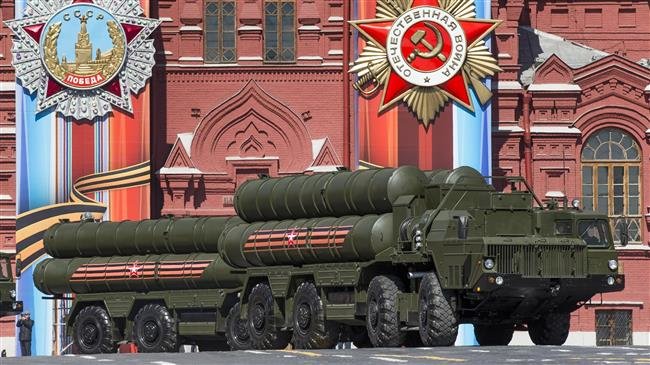US warns India of sanctions
October 4, 2018 | Expert Insights

The United States has warned India against a planned purchase of S-400 surface-to-air missiles from Russia when President Vladimir Putin visits New Delhi this week.
Background
India has long maintained cordial relations with Russia since Independence through a non-aligned strategy. This neutral approach has been observed in contemporary times when India abstained from voting against Russia on the Crimean issue, while Russia supported India’s bid to join the Nuclear Supplier’s Group (NSG). Diplomatic ties are secondary to Russia’s pivotal role in India’s defence sector with the former providing 62% to Indian arms in the past 5 years.
The S400 (NATO call name SA 21 “Growler”) is an impeccable piece of defence machinery with multifunction radars, anti-aircraft missile systems and launchers more efficient than the American Patriot system. Three types of missile deployment provide for layered defence. The Indian forces are operating at 3/4th of their potential, making the deal imperative for defence against hostile neighbours.
Russia currently has harsh sanctions imposed on military exports by Washington under the Countering America’s Enemies Through Sanctions Act (CAATSA). Under CAATSA sanctions, countries trading with the sanctioned country are also eligible for sanctions, meaning any country buying weapons from Russia could also be sanctioned by the US.
Analysis
The United States has warned India against a planned purchase of S-400 surface-to-air missiles from Russia when President Vladimir Putin visits New Delhi this week, saying such an acquisition would attract sanctions under U.S. law. India’s military wants the missile batteries, both as a deterrent against China and to gain an edge over traditional rival, Pakistan, as they are able to track and shoot down combat aircraft, even stealth planes, at unprecedented ranges.
India and Russia will sign the missile deal, estimated at more than $5 billion, during Putin’s visit for annual summit talks with Indian Prime Minister Narendra Modi beginning on Thursday.
But the United States has warned countries trading with Russia’s defence and intelligence sectors they would face automatic sanctions under a sweeping legislation called Countering America’s Adversaries Through Sanctions Act (CAATSA) that President Donald Trump signed into law last August.
The law is designed to punish Putin for the 2014 annexation of Crimea from Ukraine, involvement in the Syrian civil war and meddling in the 2016 U.S. presidential election. “We urge all of our allies and partners to forgo transactions with Russia that would trigger sanctions under the CAATSA,” a U.S. State Department representative said. “The administration has indicated that a focus area for the implementation of CAATSA Section 231 is new or qualitative upgrades in capability – including the S-400 air and missile defence system.”
Last month, the United States imposed sanctions on China’s military for its purchase of combat fighters as well as the S-400 missile system it bought from Russia this year. The United States is also concerned about NATO ally Turkey’s decision to buy the Russian missile system, seeing it as incompatible with the alliance systems.
Modi’s government, caught in the U.S.-Russia crossfire, hopes the Trump administration will give it a pass on the proposed arms transfer from Russia.
Counterpoint
India has been the world’s largest importer of arms for the past three years and has been historically approaching the Soviet Union/Russia for its armaments. US companies have been unable to establish a foothold in the Indian market but have seen a sharp uptake in sales in the form of attack helicopters (Boeing’s AH64 Apache) and anti-submarine aircraft (Boeing’s P-8I Poseidon).
More than 80 per cent of India’s military equipment was of Soviet origin during the days of the Cold War, but since its breakup, New Delhi has diversified its weaponry.
The United States is one of its top arms suppliers, closing $15 billion worth of deals in just the last decade. U.S. firms Lockheed Martin and Boeing lead the race to sell the Indian military hundreds of aircraft to replace its ageing Russian MiG planes. By threatening sanctions in the hopes of New Delhi cancelling the S-400 deal, the US may offer its own Terminal High Altitude Air Defence System (THAAD) to the Indian armed forces.
Assessment
Our assessment is that India’s vulnerabilities on the twin borders with Pakistan and China necessitate the acquisition of a strong air defence system. This is especially relevant for the Indian air force as they need to protect their air bases. By inking this deal with the Russians, India may risk being affected by the US sanctions under the Countering America’s Adversaries through Sanctions Act or CAATSA. We believe that Washington may be mindful of India’s strategic requirement and could exempt India from CAATSA in specific deals with Russia.








Comments